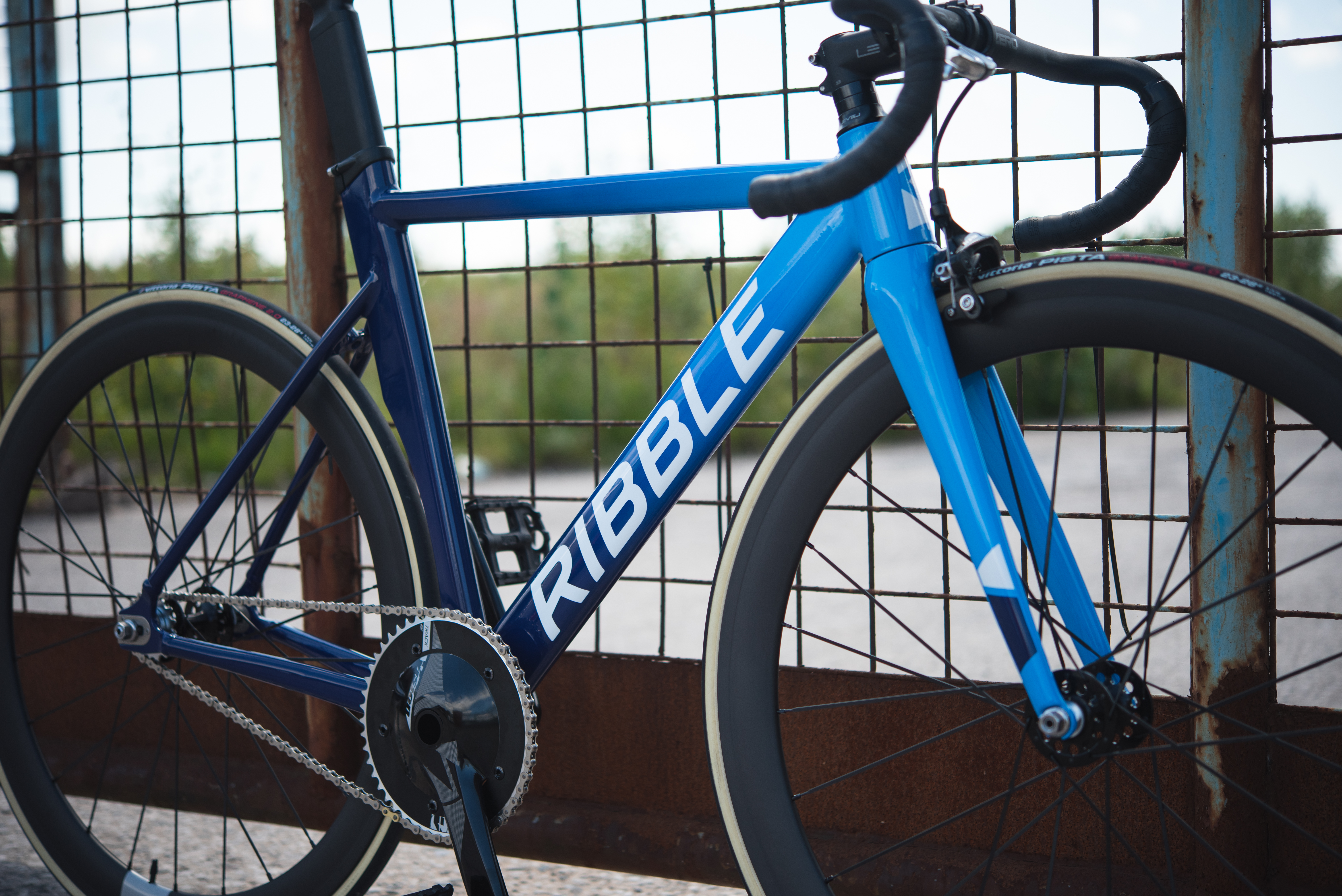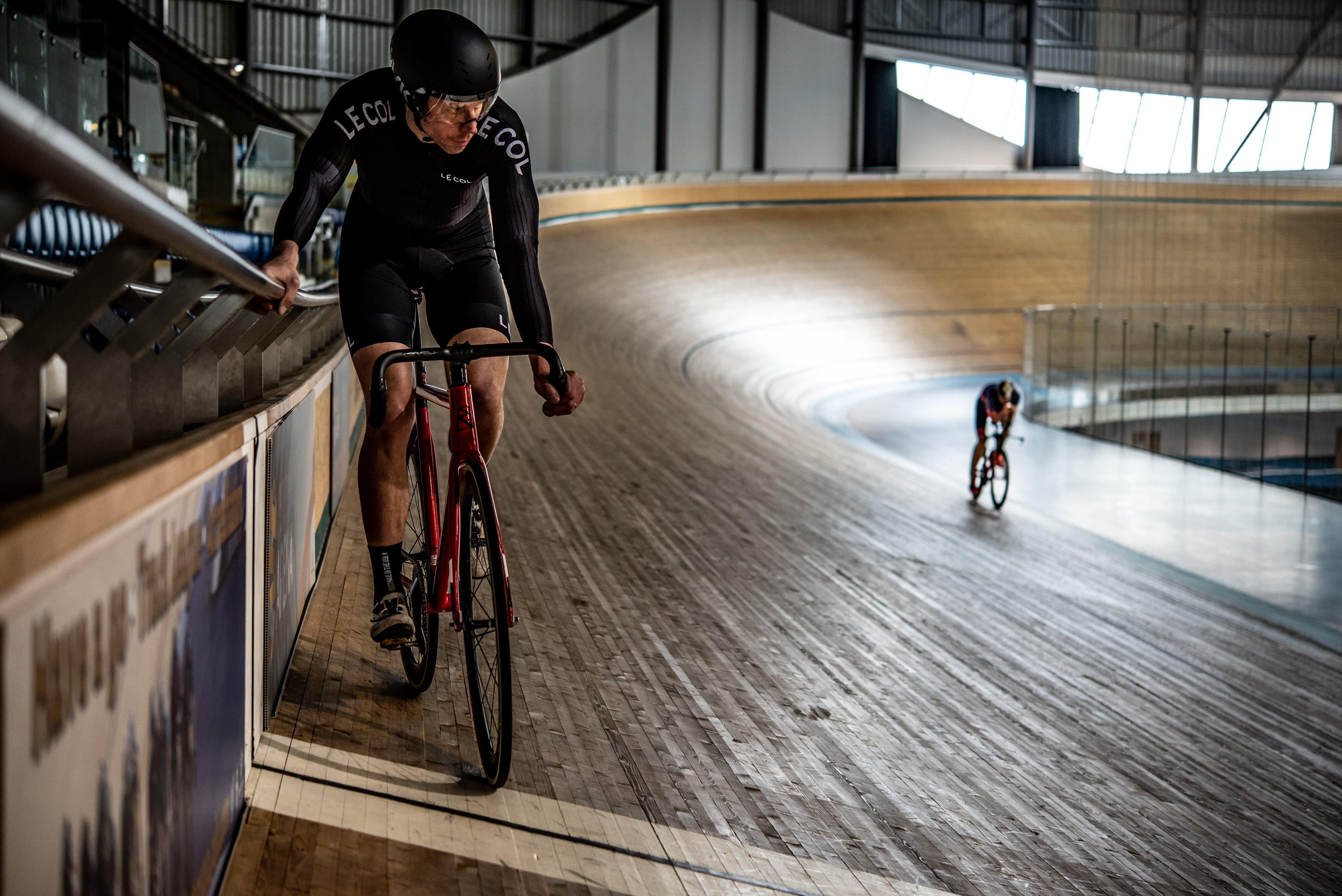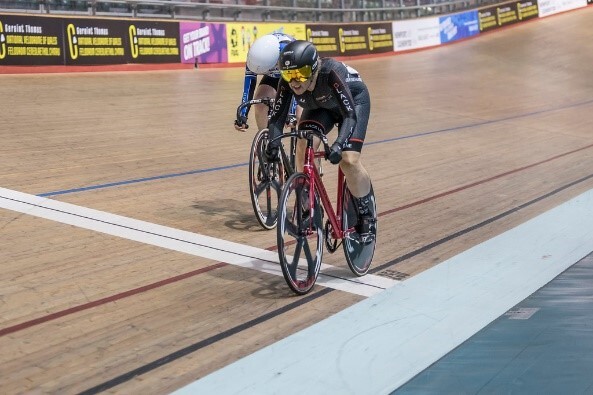Track Cycling - A Ribble guide
Thanks to the success of British cyclists in recent Olympics and World Championships the popularity of track racing is as high as it ever has been. On the eve of the commencement of the UK track cycling season we take a look at what makes track cycling such a popular sport for spectators and competitors alike. Have you ever wondered what those lines that snake around the track were for? Or perhaps what the events consist of? Read a Ribble guide to track cycling for the lowdown on all things track;
The Track

In this image you can clearly see the coloured lines that denote the sections of the track.
The advent of track cycling can be traced back to the late 19th century when cycle tracks were either purpose built for cycling or around existing facilities (think athletics tracks). It was a time when the designers had complete freedom to create a track, with very little in the way of international standards even remotely considered. It was therefore not uncommon to find yourself competing upon a track with 4 straights! If you are not familiar with modern track racing; they are all ovalized with just the 2 straights.
The modern track circuit of Olympic standard is 250 metres in length and features steep banking around the bends at either end of the oval. The sight of this banking when you first enter the track is truly awe inspiring. On a 250m track you can expect the track to rise above you at a seemingly insurmountable angle of 45°. Once you get a few circuits under your belt however, it becomes 2nd nature to just hurtle, carefree around the boards.
What exactly is the purpose of those coloured strips around the track? The track is split into sections that denote the lanes for certain events. The track consists of;
- The Apron is the inner painted section where riders commence and finish their rides. It’s just painted concrete so can be slippery to ride over.
- The cote d’azur is the start of the track proper and is painted Light Blue. It may often be seen lined with foam in certain events to stop riders shortening the track to gain an advantage.
- The Black line or datum line is 20cms above the cote d’ azur and denotes the total length of the track. This will be 250m for Olympic distance tracks.
- The Red line denotes the sprinter’s line, if the lead sprinter is in the sprinter’s lane (between the Black and Red lines) any opponent wishing to overtake must do so above this lane. They may only then move into the sprinters lane when the overtake is complete. Whilst the overtake is occurring the lead sprinter may also not leave this lane, doing so will result in relegation.
- The Blue line near the top of the track is only used in Madison races where resting riders will circle the track before being handslung back into the race by their partner.
https://www.youtube.com/watch?v=T2QjZqz67IU
Aero testing at Derby velodrome with Dan Bigham of Ribble Pro Cycling and Adam Bowden.
The Bike

The Ribble Eliminator AL, note how the top tube slopes towards the front end for maximum aero positioning.
All track bikes have fixed gearing, which means they have no freehub built into the rear wheel. The back-wheel acts as a rear brake, if you stop pedalling the back wheel immediately locks up. A heart stopping moment for any cyclist!
Aerodynamics play a huge part in the design of the track bike and the frameset will fully utilise truncated aeofoil or full aerofoil tubing profiles to maximise airflow and produce as little drag as possible. In terms of geometry the modern track bike differs from your typical road bike thanks to;
- A high bb to allow more clearance for the pedals to clear the track.
- A steep seat tube angle which allows the rider to achieve a more aerodynamic position and also shortens the wheelbase.
- A steep and short head tube, again this creates a more aero position and also creates more responsive steering.
- A short top tube to reduce the wheelbase, though riders will often compensate for this by having longer handlebar stems and often at a negative angle. By this we mean the stem will point downwards rather than remain horizontal or have a slight rise.

A CustomColour edition of our Eliminator Aero bike.
Track events
The major advantage of track racing is that it offers great off-season training for road racers. And for some it has offered a great platform into the lucrative pro ranks of the World Tour, think of homegrown talents such as Geraint Thomas, Chris Boardman and Bradley Wiggins. It is however far rarer for a dedicated track sprinter to leave the track for world tour teams on the road as their short efforts are not well suited to the endurance format of road racing.
In essence there are 2 categories of track racing, ‘endurance’ and ‘sprints’. You can easily spot the difference between the 2 types of rider; the sprinter will be big and powerful with large muscles developed to provide explosive power. The endurance rider will be slighter in build and will concentrate on high power outputs over longer intervals.
During a riders early development they will initially compete in a variety of race formats before deciding upon the format that suits them best. They will quickly learn what discipline suits them best and tailor their training both on and off the bike for their preferred style of racing. If they can hold an impressive power level for extended periods of time then they will participate in Endurance events.

Aero testing at Derby velodrome with Dan Bigham, our test rider prepares for the start of a session. Note the slope of the banking.
Endurance Events
Individual Pursuit – 2 riders line up on opposite sides of the track and race over a distance of 4km for men and 3km for women. It’s an exciting form of racing as each competitor rides along the Light Blue boards and attempts to catch the other. If the catch is made then the rider that makes the catch wins the race. They may choose to continue riding if it is a qualifying round or the final of the event where the winner is attempting to set the fastest time or set a new record.

GB women displaying the precision required for pursuit glory.
Team Pursuit – The same principle as the individual event however, this time there are 4 riders who ride line astern and as closely as possible to the rider in front (drafting). This helps to reduce drag and also allows the rider behind to conserve energy for their turn on the front. Each rider takes a turn on the front and then peels off up the track to then swing back onto the tail of the train. Sometimes a strong rider will sacrifice themselves by taking a long turn on the front and then swing out of line to complete their part in the race. As long as 3 riders complete the distance the timing is always taken off the third placed finisher.
Points Race – The field race over 40km (men), 25km (women) and attempt to accumulate the highest points total. Sprints are conducted every 10 laps with 5,3,2 and 1 points being awarded. Riders will also attempt to gain a lap on the field which earns them 20 points. It is often difficult to tell exactly what is going on in a race as riders are often spread around the length of the track.

The points race can be a confusing affair with riders strewn around the track.
Madison – Teams of 2 or 3 riders attempt to ride the most laps, with only 1 rider being in the race itself at any time. The other rider/s will circle around the top of the track waiting to be handslung into the race when it is their turn. The team itself determines how many laps they take on their turn.
Scratch Race – Riders attempt to finish 1st after a certain number of laps over 15km for men and 10km for women. If a rider is lapped they must drop out.
Omnium – This is similar to the heptathlon or decathlon in athletics. Set over 2 days the athletes compete across a number of track events. They then attempt to score as many points as possible for these combined events.

In the Madison event the rider at the bottom is handslinging his colleague back into the race before moving u the boards for a brief rest.
Sprint Events

The classic sprint with powerfully built riders vying for victory.
Sprint – 2 riders compete over a set distance between 250m and 1000m and attempt to cross the line first. Riders will cat and mouse, riding at erratic speeds and even coming to a complete standstill (track standing) to determine who leads out the final sprint for the line.
Team Sprint – In the men’s version, a team of 3 riders compete over 3 laps. Each rider goes full gas for 1 lap before swinging off, their effort done. The team with the fastest time wins. With the women it is a team of 2 riders over 2 laps.
Keirin – One of the more unique races in track cycling. Riders start behind a small motorbike (or a derny for the more traditional races) and line up behind this pace bike. The derny increases it’s pace gradually from 30kmh at the start to 50kmh and with 750m to go peels off the track. Then the rider’s jockey for position before they contest a sprint for the line.
Track Time Trial – Competitors complete 1000m against the clock, they will use more aerodynamic bikes than in other events with aero bars fitted to maintain as streamlined a position as possible.

Riders spring from the line to position themselves behind the Derny bike and then contest the sprint once the Derny bike pulls off the track.
If you have watched track racing on TV and found yourself cheering on team GB riders then why not take it one step further and give it a try? All velodromes offer taster sessions and if you love it as much as we do you can take up accreditation to compete in track leagues and races. The sensation of climbing the boards and then hurtling back down is extremely addictive and we can guarantee 2 things. You will have a grin from ear to ear and you will love it!
And, it's never too late to start, our very own brand ambassador Alison Salthouse only took up track cycling at the age of 53 and this year competes in the masters World Championships at the age of 60!

Alison Salthouse sprints to the win!
Alison Salthouse wins Silver at the UK Masters National Track Championships! Read about it here.
Read about Alisons journey from self confessed-couch potato to track racer here.